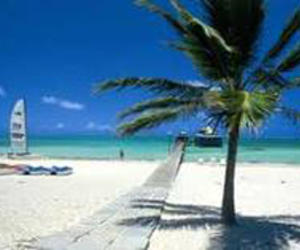Bay Area's business ties to Cuba could grow
- Submitted by: manso
- Editorial Articles
- 06 / 13 / 2011

Andrew S. Ross. San Francisco Chronicle June 12, 2011 04:00 AM.Sunday, June 12, 2011. "Wow," said a dance teacher in San Francisco who is planning a trip to Cuba to check out the professional dance scene there. "Now I can make the trip without having to take a bunch of connections," she said, referring to the news last week that Oakland International Airport is starting direct flights to Havana later this year.
Equally happy, presumably, are folks at UC Berkeley, Stanford and other academic institutions in the Bay Area, which are exempt from travel restrictions, as are a number of other professionals, including doctors, attorneys, architects, planners and artists, of which the Bay Area has many.
"We expect the demand for travel to Cuba from the Bay Area to increase substantially over the next year," said Michael Zuccato, general manager of Cuba Travel Services, which will begin selling round-trip tickets (approximately $860) for the 5 1/2-hour flight later this summer and handles all the necessary paperwork ( www.cubatravelservices.com).
Had a direct flight been available sooner, Gregory Stagnitto's trip to Cuba last month would have been a little less time-consuming.
Stagnitto, CEO of Highland Wholesale Foods in Stockton, was there to explore the market for his California wares, including tomatoes, peaches and pears, and bulk items, like beans and long-grain rice (which Cubans prefer to California's standard medium-grain kind).
"We've been interested in selling our products there for many years," said Stagnitto, who, with his retail sales manager, George Medeiros, met with executives of a five-star hotel chain and owners of local supermercados.
"We found we had a lot to offer price-wise; the reception was very warm," said Stagnitto, who is now preparing for a food trade show in Havana in November.
Delighted with Spam: Combined with the gradual loosening of the 50-year-old commercial and financial U.S. embargo on Cuba, the Oakland gateway presents an "exciting opportunity" for California businesses interested in the Cuban market, says Gregory Estevane, president of Global Strategies Trading, an export agency in Los Angeles.
Estevane, who has been squiring U.S. businesses and trade missions to Cuba for the past 10 years, has sold a number of food-related products there, including $1 million worth of tomato paste from the Central Valley, fish from Los Angeles, and Spam from Hormel.
"We're quite proud of exporting Spam to Cuba. And, the Cubans were delighted," he said.
There are other business sectors not subject to the embargo that could be interested locally, said Estevane and Zuccato, pointing to pharmaceuticals, especially medical supplies, and telecommunications. But, there seems to be little activity or even interest in these areas so far, or even from the state's giant agricultural industry.
There have been a number of trade delegations to Cuba in the past several years, including one led by Sen. Barbara Boxer, D-Calif., another by San Francisco's Wine Institute, but very little follow-up.
Not even from the California Farm Bureau Federation, whose former president, Doug Mosebar, wrote, on his return from a trade trip to Cuba in 2007, "Cuba is among the largest undeveloped markets for California agricultural commodities in the world."
"They are too poor to buy much of our horticultural exports or wine," said Daniel Sumner, director of the Agricultural Issues Center at UC Davis. "So, it would seem the trade is limited."
"It's just a long way from opening a charter route between Oakland and Havana to real business generation on any scale," said Sean Randolph, CEO of the Bay Area Council Institute.
Anachronistic obstacle: True, California trade with Cuba is pretty small potatoes.
In 2004, its best recent year, the state sold $9.2 million worth of goods to Cuba. In 2010, according to U.S. Department of Commerce statistics, the figure dropped to a derisory $684,412, mostly edible fruits and nuts and vegetable-based food ingredients.
So far this year, the amount stands at $889,850, mostly from a shipment of engine parts for Cuban buses.
The numbers could be larger, said Jock O'Connell, an international trade analyst at Beacon Economics, because the government statistics are based on the registered point of departure for Cuba, not the point of production. Exports to Cuba often take a circuitous route, he pointed out.
And they could be considerably larger if the absurdly anachronistic U.S. embargo was lifted altogether, and necessary financing for California and U.S. business was instituted, said everyone I spoke to on the matter.
"When serious trade and travel is normalized, and U.S. tourists come to Cuba in their millions, everything else will fall into place," said Estevane.
"If it looks like we're not breaking any laws, and there's a direct flight from here, we'd be interested."
Source: http://www.sfgate.com/cgi-bin/article.cgi?f=/c/a/2011/06/12/BUQQ1JSCED.DTL
Comments